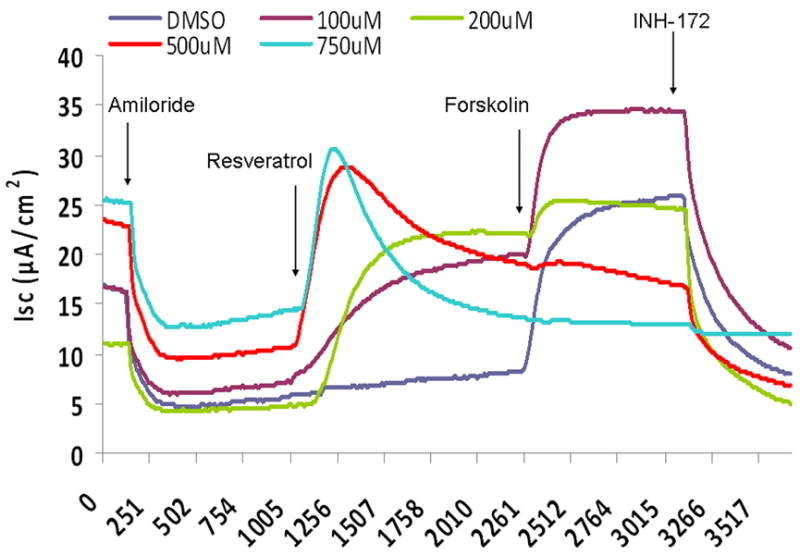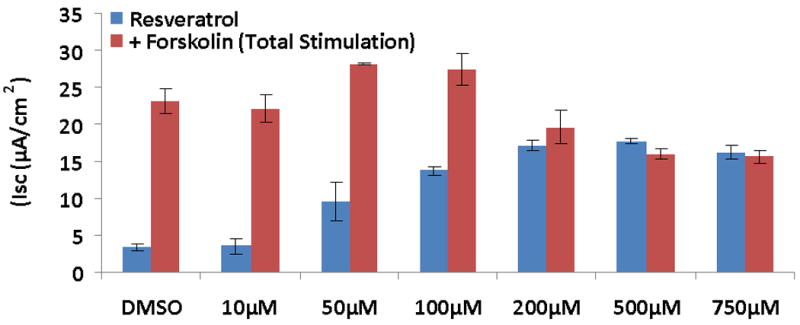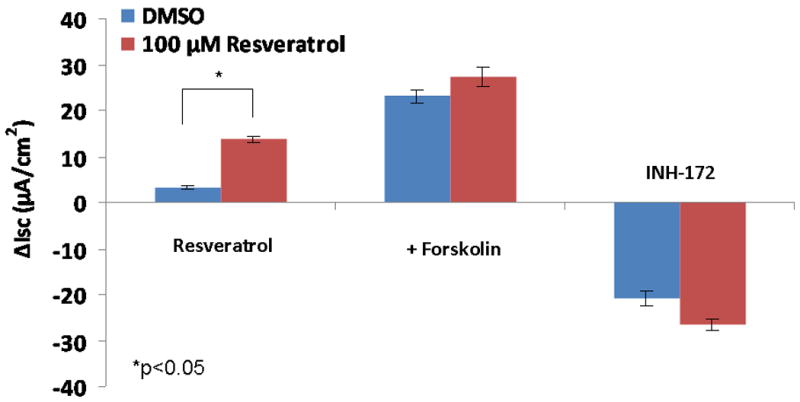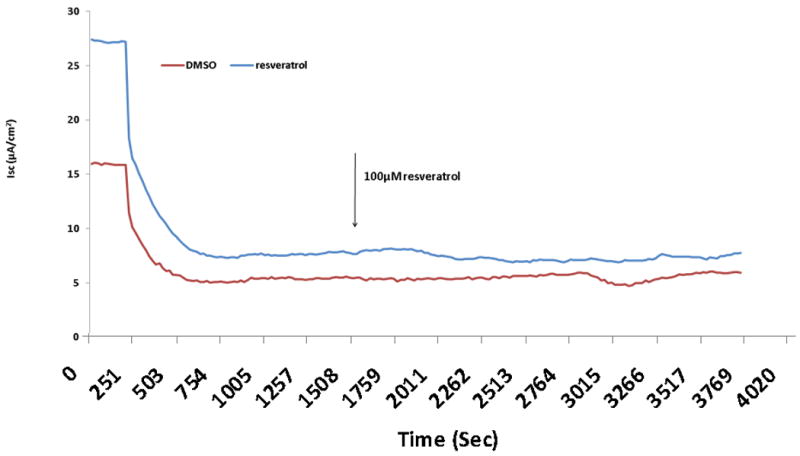Figure 1. Resveratrol Stimulates CFTR-mediated Cl- Transport in MNSE in vitro.




(A) Representative Ussing chamber tracings reveals resveratrol activation of Cl- transport in a dose-dependent fashion. By convention, a positive deflection in the tracing (ΔISC) represents movement of an anion (i.e. Cl-) from the serosal to mucosal direction. (B) Graphic representation of resveratrol stimulation vs. total stimulation [resveratrol + forskolin (100 nM)] of transepithelial Cl- conductance (n ≥ 3 per condition). Resveratrol concentrations > 100 uM result in decreased total stimulation. (C) Resveratrol (100 μM) significantly increased Cl- transport when compared to DMSO control (n ≥ 5; p<0.05) However, total stimulated ΔISC (resveratrol + forskolin) and inhibition of CFTR-mediated ISC following application of INH-172 were not statistically different when compared to the corresponding controls. (D) Ussing chamber tracings of CFTR-/- MNSE exposed to resveratrol (100 μM) following amiloride (100 nM) blockade shows no measurable response indicating apical CFTR dependence of Cl- secretagogue activity.
